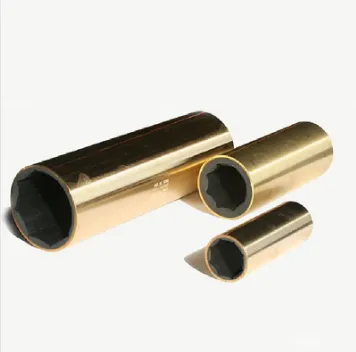Understanding the Role of Marine Bearings in Energy-Efficient Vessel Design
Marine bearings are critical components in the operation of ships and other marine vessels, facilitating smooth movement and reducing friction between moving parts. Beyond their mechanical function, these bearings play a pivotal role in enhancing the energy efficiency of modern vessels. As the maritime industry increasingly emphasizes sustainability and cost reduction, understanding the contribution of marine bearings to energy-efficient vessel design is more crucial than ever.

The Importance of Energy Efficiency in Marine Design
Energy efficiency is a key concern for the maritime industry, driven by rising fuel costs and stringent environmental regulations. Efficient vessel operation not only reduces operational expenses but also minimizes greenhouse gas emissions, aligning with global initiatives to combat climate change.
Cutlass bearings contribute to this efficiency by reducing energy losses caused by friction and wear. By optimizing the performance of critical systems like propulsion, steering, and load handling, these components help vessels achieve significant fuel savings and lower emissions.
How Marine Bearings Improve Energy Efficiency
Cutlass bearing boat are engineered to handle high loads while minimizing friction. This is achieved through precise design, high-performance materials, and advanced lubrication systems. Bearings in propulsion systems, for instance, reduce resistance in shafts and propellers, ensuring maximum transfer of energy from the engine to the water.
In steering mechanisms, rudder bearings enhance maneuverability while requiring less energy to operate. Similarly, bearings used in cargo handling equipment and auxiliary systems contribute to overall vessel efficiency by ensuring smooth operation with minimal power consumption.
Material Innovations Driving Efficiency About Marine Bearings
The choice of materials for marine bearings greatly influences their performance and durability. Advanced materials such as composite polymers, ceramic hybrids, and corrosion-resistant metals are increasingly used to enhance bearing efficiency. These materials reduce weight, improve load capacity, and extend the lifespan of the bearings, all of which contribute to energy savings.
Additionally, innovative coatings and treatments minimize wear and prevent corrosion, ensuring consistent performance even in harsh marine environments. Such durability reduces the frequency of repairs and replacements, further improving the energy efficiency of vessels.
Lubrication Systems for Optimal Performance About Marine Bearings
Lubrication is essential for the smooth operation of marine bearings. Modern lubrication systems are designed to minimize friction while maintaining environmental compliance. Water-lubricated bearings, for example, eliminate the need for oil-based lubricants, reducing the risk of marine pollution and improving energy efficiency by reducing resistance in the bearing interface.
Advances in lubrication technology also include the use of biodegradable and low-viscosity lubricants, which offer enhanced performance with reduced energy consumption. Automated lubrication systems further optimize bearing performance by ensuring consistent and precise lubrication under varying operating conditions.
Impact on Sustainable Shipping About Marine Bearings
The role of marine bearings extends beyond energy efficiency to broader sustainability goals. Bearings designed for reduced energy consumption contribute to lower fuel usage, which directly translates to decreased carbon emissions. In a time when the shipping industry is under scrutiny for its environmental impact, such contributions are invaluable.
Moreover, energy-efficient bearings align with the industry’s shift towards alternative propulsion systems, such as electric and hybrid engines. Bearings optimized for these systems ensure that vessels can transition smoothly to greener technologies without compromising performance.
Future Trends in Marine Bearing Technology About Marine Bearings
As the maritime industry evolves, so too does the technology behind marine bearings. Innovations such as smart bearings equipped with sensors are emerging, enabling real-time monitoring of bearing performance. These systems allow for predictive maintenance, reducing downtime and energy losses caused by malfunctioning components.
The integration of advanced computational tools in bearing design is also enhancing their efficiency. Computational fluid dynamics (CFD) and finite element analysis (FEA) are being used to optimize bearing shapes and materials for minimal friction and maximal durability.
-
Seal 12x20x5: Precision Radial Shaft Seals for Industrial Reliability
News Nov.24,2025
-
Seal 12x18x5: Essential Guide to Specifications, Applications & Vendors
News Nov.24,2025
-
Understanding Seal 12 20 5: Applications, Specifications & Industry Insights
News Nov.23,2025
-
Durable Oil Seal 85x110x12 – Reliable Sealing Solutions for Industry
News Nov.23,2025
-
Durable and Precise Oil Seal 75x95x10 for Efficient Machinery | YJM Seal
News Nov.22,2025
-
Durable Oil Seal 75x100x10 for Reliable Industrial Performance | YJM Seal
News Nov.22,2025
-
High-Quality Oil Seal 65x90x10 | Durable & Reliable Sealing Solutions
News Nov.22,2025
Products categories















